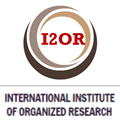Aspectos actuales sobre la fisiopatogenia del esófago de Barrett
Texto completo:
PDFResumen
Objetivo: hacer un resumen de lo expuesto en la literatura para que valga de herramienta de consulta.
Métodos: se realizó una búsqueda bibliográfica a través de PubMed y Google Académico, en inglés y español. Se consultaron, fundamentalmente, revistas científicas de los últimos años contenidas en la base de datos Medline, otras de similar calidad pero que no son parte de Medline y algunas tesis.
Conclusiones: la comprensión de la fisiopatogenia, que tiene en cuenta las células que originan la metaplasia intestinal y la identificación temprana de los estados de progresión al adenocarcinoma, ha ganado una significativa atracción en la investigación a través de modelos humanos y animales durante los últimos años. El conocimiento de la respuesta inmune y el medioambiente luminar sobre una base genética permitirá colocar los recursos en los pacientes con alto riesgo y evitará procedimientos innecesarios a pacientes de menor riesgo.
Palabras clave
Referencias
Lowes H, Somarathna T, Shepherd N. Definition, Derivation, and Diagnosis of Barrett’s Esophagus: Pathological Perspectives. Adv Exp Med Biol [Internet]. 2016 [citado 13/11/2019];908:111-136. Disponible en: https://pubmed.ncbi.nlm.nih.gov/27573770/. https://doi.org/10.1007/978-3-319-41388-4_7
Kuipers EJ, Spaander MC. Natural History of Barrett’s Esophagus. Dig Dis Sic [Internet]. 2018 [citado 13/11/2019];63(8):1997-2004. https://www.ncbi.nlm.nih.gov/pmc/articles/PMC6113676/. https://dx.doi.org/10.1007/s10620-018-5161-x
Offman J, Muldrew B, O'Donovan M, Debiram-Beecham I, Pesola F, Kaimi I, et al. Barrett's oESophagus trial 3 (BEST3): study protocol for a randomised controlled trial comparing the Cytosponge-TFF3 test with usual care to facilitate the diagnosis of oesophageal pre-cancer in primary care patients with chronic acid reflux. BMC Cancer [Internet]. 2018 [citado 13/11/2019];18(1):784. Disponible en: https://www.ncbi.nlm.nih.gov/pmc/articles/PMC6091067/. https://dx.doi.org/10.1186/s12885-018-4664-3
De Jonge PJF, van Blankenstein M, Looman CWN, Casparie MK, Meijer GA, Kuipers EJ. Risk of malignant progression in patients with Barret´s oesophagus: a Dutch nationwide cohort study. Gut [Internet]. 2010 [citado 13/11/2019];59(8):1030-1036. Disponible en: https://pubmed.ncbi.nlm.nih.gov/20639249/. https://doi.org/10.1136/gut.2009.176701
Gross SA, Kingsbery J, Jang J, Lee M, Khan A. Evaluation of Dysplasia in Barrett Esophagus. Gastroenterol Hepatol (N Y) [Internet]. 2018 [citado 02/02/2020];14(4):233-239. Disponible en: https://www.ncbi.nlm.nih.gov/pmc/articles/PMC6009185/
Drahos J, Ricker W, Parsons R, Pfeiffer R, Warren JL, Cook MB. Metabolic syndrome increases risk of Barrett esophagus in the absence of gastroesophageal reflux: an analysis of SEER-Medicare Data. J Clin Gastroenterol [Internet]. 2015 [citado 13/11/2019];49(4):282-288. Disponible en: https://www.ncbi.nlm.nih.gov/pmc/articles/PMC4176548/. https://dx.doi.org/10.1097/mcg.0000000000000119
Brimhall B, Wani S. Current Endoscopic Approaches for the Treatment of Barrett Esophagus. J Clin Gastroenterol [Internet]. 2017 [02/02/2020];51(1):2–11. Disponible en: https://pubmed.ncbi.nlm.nih.gov/27941583/. https://doi.org/10.1097/mcg.0000000000000742
Singh S, Garg SK, Singh PP, Iyer PG, El-Serag HB. Acid-suppressive medications and risk of oesophageal adenocarcinoma in patients with Barrett’s oesophagus: a systematic review and meta-analysis. Gut [Internet]. 2014 [02/02/2020];63(8):1229-1237. Disponible en: https://www.ncbi.nlm.nih.gov/pmc/articles/PMC4199831/. https://doi.org/10.1136/gutjnl-2013-305997
Peláez Luna M, Hernández Guerrero AI, Valdovinos Andraca F, Herrera Esquivel JJ, Martínez García CL, Aquino Pérez S. Guías de diagnóstico, vigilancia y manejo del esófago de Barrett. Asociación Mexicana de Endoscopia Gastrointestinal. Endoscopia [Internet]. 2017 [02/02/2020];29(2):97-112.Disponible en: http://revista.amegendoscopia.org.mx/index.php/endos/article/view/63
Shaheen NJ, Falk GW, Iyer PG, Gerson LB. ACG Clinical Guideline: Diagnosis and Management of Barrett’s Esophagus. AmJ Gastroenterol [Internet]. 2016 [02/02/2020];111(1):30-50. Disponible en: https://journals.lww.com/ajg/fulltext/2016/01000/acg_clinical_guideline__diagnosis_and_management.17.aspx. https://doi.org/10.1038/ajg.2015.322
Triadafilopoulos G, Friedland S. Precision care for Barrett's esophagus. Transl Gastroenterol Hepatol [Internet]. 2018 [citado 02/02/2020];3:67. Disponible en: https://www.ncbi.nlm.nih.gov/pmc/articles/PMC6182039/. https://dx.doi.org/10.21037/tgh.2018.09.10
Souza RF. From Reflux Esophagitis to Esophageal Adenocarcinoma. Dig Dis [Internet]. 2016 [citado 02/02/2020];34(5):483–490.Disponible en: https://www.ncbi.nlm.nih.gov/pmc/articles/PMC4936412/. https://dx.doi.org/10.1159/000445225
Öberg S, Johansson J, Wenner J, Walther B. Metaplastic columnar mucosa in the cervical esophagus after esophagectomy. Ann Surg [Internet]. 2002 [citado 02/02/2020];235(3):338-345. Disponible en: https://www.ncbi.nlm.nih.gov/pmc/articles/PMC1422439/. https://dx.doi.org/10.1097/00000658-200203000-00005
Sharma P, Dent J, Armstrong D. Clinical practice. Barrett´s esophagus. N Engl J Med [Internet]. 2009 [citado 02/02/2020];361(26):2548-2556. Disponible en: https://pubmed.ncbi.nlm.nih.gov/20032324/. https://doi.org/10.1056/nejmcp0902173
Quante M, Graham TA, Jansen M. Insights Into the Pathophysiology of Esophageal Adenocarcinoma. Gastroenterology [Internet]. 2018 [citado 02/02/2020];154(2):406–420. Disponible en: https://pubmed.ncbi.nlm.nih.gov/29037468/. https://doi.org/10.1053/j.gastro.2017.09.046
Zhang W, Wang DH. Origins of Metaplasia in Barrett’s Esophagus: Is this an Esophageal Stem or Progenitor Cell Disease? Dig Dis Sci [Internet]. 2018 [citado 02/02/2020];63(8):2005-2012. Disponible en: https://www.ncbi.nlm.nih.gov/pmc/articles/PMC6783253/. https://doi.org/10.1007/s10620-018-5069-5
Schlottmann F, Molena D, Patti MG. Gastroesophageal reflux and Barrett’s esophagus: a pathway to esophageal adenocarcinoma. Updates Surg [Internet]. 2018 [citado 02/02/2020];70(3):339-342. Disponible en: https://pubmed.ncbi.nlm.nih.gov/30039277/. https://doi.org/10.1007/s13304-018-0564-y
Wang DH, Souza RF. Transcommitment: paving the way to Barrett’s metaplasia. Adv Exp Med Biol [Internet]. 2016 [citado 02/02/2020];908:183–212. Disponible en: https://pubmed.ncbi.nlm.nih.gov/27573773/. https://doi.org/10.1007/978-3-319-41388-4_10
Naini BV, Souza RF, Odze RD. Barrett’s Esophagus: A Comprehensive and Contemporary Review for Pathologists. Am J Surg Pathol [Internet]. 2017 [citado 02/02/2020];40(5):e45–e66. Disponible en: https://www.ncbi.nlm.nih.gov/pmc/articles/PMC4833583/. https://dx.doi.org/10.1097/PAS.0000000000000598
Biswas S, Quante M, Leedham S, Jansen M. The metaplastic mosaic of Barrett's oesophagus. Virchows Arch [Internet]. 2018 [citado 12/02/2020];472(1):43-54. Disponible en: https://www.ncbi.nlm.nih.gov/pmc/articles/PMC5849653/. https://dx.doi.org/10.1007/s00428-018-2317-1
Gharahkhani P, Fitzgerald R, Vaughan TL, Palles C, Gockel I, Tomlinson I, et al. Genome-wide association studies in oesophageal adenocarcinoma and Barrett’s oesophagus: a large-scale meta-analysis. Lancet Oncol [Internet]. 2016 [citado 12/02/2020];17(10):1363–1373.Disponible en: https://www.ncbi.nlm.nih.gov/pmc/articles/PMC5052458/. https://dx.doi.org/10.1016/s1470-2045(16)30240-6
Palles C, Chegwidden L, Li X, Findlay JM, Farnham G, Castro Giner F, et al. Polymorphisms near TBX5 and GDF7 are associated with increased risk for Barrett’s esophagus. Gastroenterology [Internet]. 2015 [citado 12/02/2020];148(2):367–378. Disponible en: https://www.ncbi.nlm.nih.gov/pmc/articles/PMC4315134/. https://dx.doi.org/10.1053/j.gastro.2014.10.041
Phelan JJ, MacCarthy F, O'Toole D, Ravi N, Reynolds JV, O'Sullivan J. The Mitochondrial Genes BAK1, FIS1 and SFN are Linked with Alterations in Mitochondrial Membrane Potential in Barrett's Esophagus. Int J Mol Sci [Internet]. 2018 [citado 12/02/2020];19(11):3483. Disponible en: https://www.ncbi.nlm.nih.gov/pmc/articles/PMC6275077/. https://doi.org/10.3390/ijms19113483
Horvath B, Singh P, Xie H, Thota PN, Sun X, Liu X. Expression of p53 predicts risk of prevalent and incident advanced neoplasia in patients with Barrett's esophagus and epithelial changes indefinite for dysplasia. Gastroenterol Rep (Oxf) [Internet]. 2016 [citado 5/03/2020];4(4):304-309. Disponible en: https://www.ncbi.nlm.nih.gov/pmc/articles/PMC5193059/. https://doi.org/10.1093/gastro/gov045
Ross-Innes CS, Becq J, Warren A, Cheetham RK, Northen H, O'Donovan M, et al. Whole-genome sequencing provides new insights into the clonal architecture of Barrett's esophagus and esophageal adenocarcinoma. Nat Genet [Internet]. 2015 [citado 08/03/2020];47(9):1038-1046. Disponible en: https://www.ncbi.nlm.nih.gov/pmc/articles/PMC4556068/. https://doi.org/10.1038/ng.3357
Weaver JMJ, Ross-Innes CS, Shannon N, Lynch AG, Forshew T, Barbera M, et al. Ordering of mutations in preinvasive disease stages of esophageal carcinogenesis. Nat Genet [Internet]. 2014 [citado 08/03/2020];46(8):837-843. Disponible en: https://www.ncbi.nlm.nih.gov/pmc/articles/PMC4116294/. https://dx.doi.org/10.1038/ng.3013
Corning B, Copland AP, Frye JW. The Esophageal Microbiome in Health and Disease. Curr Gastroenterol Rep [Internet]. 2018 [citado 08/03/2020];20(8):39. Disponible en: https://pubmed.ncbi.nlm.nih.gov/30069679/. https://doi.org/10.1007/s11894-018-0642-9
Gorkiewicz G, Moschen A. Gut microbiome: a new player in gastrointestinal disease. Virchows Arch [Internet]. 2018 [citado 08/03/2020];472(1):159-172. Disponible en: https://www.ncbi.nlm.nih.gov/pmc/articles/PMC5849673/. https://doi.org/10.1007/s00428-017-2277-x
Lynch KL. Is Obesity Associated with Barrett’s Esophagus and Esophageal Adenocarcinoma? Gastroenterol Clin North Am [Internet]. 2016 [citado 08/03/2020];45(4):615–624. Disponible en: https://pubmed.ncbi.nlm.nih.gov/27837776/. https://doi.org/10.1016/j.gtc.2016.07.002
Parasa S, Mahankali Sridhar AR. Metabolic Syndrome, GERD, Barrett’s Esophagus. In: Ahima RS, editors. Metabolic Syndrome. Cham: Springer; 2015 [citado 18/04/2020]. Disponible en: https://link.springer.com/referenceworkentry/10.1007%2F978-3-319-12125-3_37-1. https://doi.org/10.1007/978-3-319-12125-3_37-1
Hoyo C, Cook MB, Kamangar F, Freedman ND, Whiteman DC, Bernstein L, et al. Body mass index in relation to oesophageal and oesophagogastric junction adenocarcinomas: a pooled analysis from the International BEACON Consortium. Int J Epidemiol [Internet]. 2012 [citado 18/04/2020];41(6):1706–1718. Disponible en: https://www.ncbi.nlm.nih.gov/pmc/articles/PMC3535758/. https://doi.org/10.1093/ije/dys176
Thrift A, Shaheen NJ, Gammon MD, Bernstein L, Reid BJ, Onstad L, et al. Obesity and risk of esophageal adenocarcinoma and Barrett’s esophagus: a Mendelian randomization study. J Natl Cancer Inst [Internet]. 2014 [citado 18/04/2020];106(11):dju252. Disponible en: https://www.ncbi.nlm.nih.gov/pmc/articles/PMC4200028/. https://dx.doi.org/10.1093/jnci/dju252
Hsieh YH, Wu MF, Yang PY, Liao WC, Hsieh YH, Chang YJ, et al. What is the impact of metabolic syndrome and its components on reflux esophagitis? A cross-sectional study. BMC Gastroenterol [Internet]. 2019 [citado 18/04/2020];19(1):33. Disponible en: https://www.ncbi.nlm.nih.gov/pmc/articles/PMC6381695/. https://dx.doi.org/10.1186/s12876-019-0950-z
Iijima K, Henry E, Moriya A, Wirz A, Kelman AW, McColl KEL. Dietary nitrate generates potentially mutagenic concentrations of nitric oxide at the gastroesophageal junction. Gastroenterology [Internet]. 2002 [citado 18/04/2020];122(5):1248-1257. Disponible en: https://pubmed.ncbi.nlm.nih.gov/11984511/. https://doi.org/10.1053/gast.2002.32963
Asanuma K, Huo X, Agoston A, Zhang X, Yu C, Cheng E, et al. In oesophageal squamous cells, nitric oxide causes S-nitrosylation of Akt and blocks SOX2 (sex determining region Y-box 2) expression. Gut [Internet]. 2016 [citado 18/04/2020];65(9):1416-1426. Disponible en: https://www.ncbi.nlm.nih.gov/pmc/articles/PMC4651671/. https://doi.org/10.1136/gutjnl-2015-309272
Erőss B, Farkas N, Vincze Á, Tinusz B, Szapáry L, Garami A, et al. Helicobacter pylori infection reduces the risk of Barrett's esophagus: A meta-analysis and systematic review. Helicobacter [Internet]. 2018 [citado 18/04/2020];23(4):e12504. Disponible en: https://www.ncbi.nlm.nih.gov/pmc/articles/PMC6055671/. https://dx.doi.org/10.1111/hel.12504
Ness-Jensen E, Lagergren J. Tobacco smoking, alcohol consumption and gastro-oesophageal reflux disease. Best Pract Res Clin Gastroenterol [Internet]. 2017 [citado 18/04/2020];31(5):501-508. Disponible en: https://pubmed.ncbi.nlm.nih.gov/29195669/. https://doi.org/10.1016/j.bpg.2017.09.004
Watari J, Oshima T, Fukui H, Tomita T, Miwa H. Carcinogenesis of Barrett’s esophagus: a review of the clinical literature. Clin J Gastroenterol [Internet]. 2013 [citado 18/04/2020];6(6):399-414. Disponible en: https://pubmed.ncbi.nlm.nih.gov/26182128/. https://doi.org/10.1007/s12328-013-0412-z
Enlaces refback
- No hay ningún enlace refback.
Copyright (c) 2022 Ignacio Morales Martínez, Misdrialis Martínez Romero, Raúl Brizuela Quitanilla











 22 de abril de 2024
22 de abril de 2024


